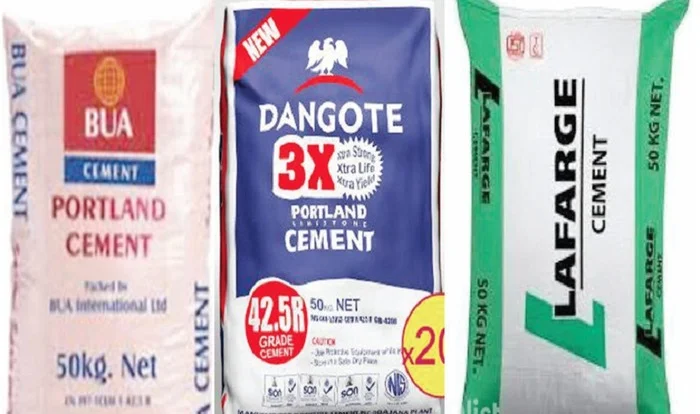Nigeria’s cement industry, driven by strong demand and a developing economy, offers lucrative investment opportunities, with Dangote Cement, BUA Cement, and Lafarge Africa leading the market, generating a combined N1.5 trillion in revenue in 2020, though each company presents unique strengths and challenges for investors.
A Lucrative Market Fueled by Demand
The cement sector’s profitability is evident in the 2020 gross revenues of major players: Dangote Cement (N1.034 trillion), Lafarge Africa (N230.6 billion), and BUA Cement (N209.4 billion). High demand allows these companies to raise prices without significant sales declines, ensuring consistent profits and making the sector attractive for investors seeking long-term income from Nigeria’s infrastructure boom.
Nigeria’s Cement Oligopoly
The industry is dominated by three key players—Dangote Cement, BUA Cement, and Lafarge Africa—forming an oligopolistic structure. Their combined N1.5 trillion revenue in 2020 highlights their market dominance, with each showcasing distinct operational efficiencies and competitive strategies.
Dangote Cement: The Market Leader
Dangote Cement remains the undisputed leader, with a 2020 turnover of N1.034 trillion and a share price of N265, far surpassing competitors. The company paid N272 billion in dividends in 2020, reflecting its financial strength. However, its profit-after-tax margin of 27% lags behind BUA Cement, indicating room for improved cost management to enhance its bottom line.
BUA Cement: Efficiency Champion
BUA Cement, the second-largest player by market capitalization, emerged as a strong contender following its 2020 merger between Obu Cements and Cement Company of Northern Nigeria. With gross earnings of N209.4 billion and a profit after tax of N72.3 billion (35% margin), BUA outperforms competitors in cost efficiency. Its dividend payout policy is exceptional, distributing 97.2% of profits over the past two years, with a price-earnings ratio of 35.78% and a share price of N74.5. However, BUA’s revenue generation trails Lafarge Africa, suggesting potential for greater market aggression.
Lafarge Africa: Revenue Strength with Challenges
Lafarge Africa, now a subsidiary of LafargeHolcim, reported N230.6 billion in revenue and N30.8 billion in profit after tax in 2020. With a share price of N23.7, Lafarge consistently outperforms BUA in revenue (e.g., N71 billion vs. N61 billion in Q1 2021, N73.5 billion vs. N63 billion in Q2 2021), possibly due to a larger customer base or higher cement prices (N4,000 per bag vs. BUA’s N3,300). Lafarge paid N16 billion in dividends in 2020 and a similar amount for the first nine months of 2021. After clearing debts and divesting problematic subsidiaries, Lafarge aims to reclaim its position as Nigeria’s second-largest cement producer, though it must improve cost management to boost profitability.
Investment Considerations
Each company offers distinct advantages for investors:
-
Dangote Cement: Unmatched scale and dividend payouts, ideal for those prioritizing market dominance, but cost optimization is needed.
-
BUA Cement: Superior cost efficiency and high dividend yields, appealing to investors seeking profitability, though revenue growth lags.
-
Lafarge Africa: Strong revenue generation and a revitalized brand, suitable for investors betting on market share, but cost control remains critical.
Despite their strengths, investors must weigh challenges such as BUA’s lower revenue and Lafarge’s cost inefficiencies. All three companies, however, are well-positioned to deliver profits rather than merely break even, making them compelling options in Nigeria’s cement market.
Why Invest in Cement?
The cement industry’s resilience, driven by Nigeria’s infrastructure needs, ensures stable returns. Investors are drawn to the sector’s ability to generate consistent income, supported by the oligopolistic structure and strong brand recognition of Dangote, BUA, and Lafarge, which collectively dominate the market.






